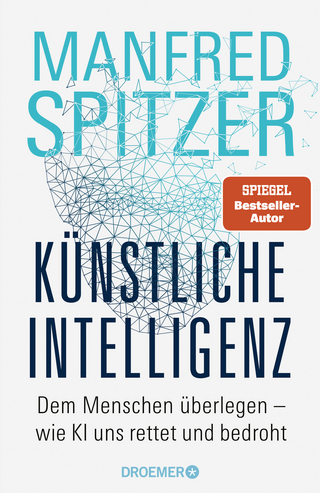
Data-Driven Computational Neuroscience
Cambridge University Press (Verlag)
978-1-108-49370-3 (ISBN)
Data-driven computational neuroscience facilitates the transformation of data into insights into the structure and functions of the brain. This introduction for researchers and graduate students is the first in-depth, comprehensive treatment of statistical and machine learning methods for neuroscience. The methods are demonstrated through case studies of real problems to empower readers to build their own solutions. The book covers a wide variety of methods, including supervised classification with non-probabilistic models (nearest-neighbors, classification trees, rule induction, artificial neural networks and support vector machines) and probabilistic models (discriminant analysis, logistic regression and Bayesian network classifiers), meta-classifiers, multi-dimensional classifiers and feature subset selection methods. Other parts of the book are devoted to association discovery with probabilistic graphical models (Bayesian networks and Markov networks) and spatial statistics with point processes (complete spatial randomness and cluster, regular and Gibbs processes). Cellular, structural, functional, medical and behavioral neuroscience levels are considered.
Concha Bielza is a professor in the Department of Artificial Intelligence at Universidad Politécnica de Madrid. She has published more than 120 journal papers and coauthored the book Industrial Applications of Machine Learning (2019). She was awarded the 2014 UPM Research Prize. Pedro Larrañaga is a professor in the Department of Artificial Intelligence at Universidad Politécnica de Madrid. He has published more than 150 journal papers and coauthored the book Industrial Applications of Machine Learning (2019). He is fellow of the European Association for Artificial Intelligence and of Academia Europaea.
Part I. Introduction; Section 1. Computational Neuroscience; Part II. Statistics; Section 2. Exploratory Data Analysis; Section 3. Probability Theory and Random Variables; Section 4. Probabilistic Interference; Part III. Supervised pattern recognition; Section 5. Performance Evaluation; Section 6. Feature subset selection; Section 7. Non-probabilistic classifiers; Section 8. Probabilistic classifiers; Section 9. Metaclassifiers; Section 10. Multi-dimensional classifiers; Part IV. Unsupervised pattern recognition; Section 11. Non-probabilistic clustering; Section 12. Probabilistic clustering; Part V. Probabilistic graphical models; Section 13. Bayesian networks; Section 14. Markov networks; Part VI. Spatial statistics; Section 15. Spatial statistics.
| Erscheinungsdatum | 15.01.2021 |
|---|---|
| Zusatzinfo | Worked examples or Exercises; 40 Line drawings, color; 210 Line drawings, black and white |
| Verlagsort | Cambridge |
| Sprache | englisch |
| Maße | 185 x 259 mm |
| Gewicht | 1490 g |
| Themenwelt | Informatik ► Theorie / Studium ► Künstliche Intelligenz / Robotik |
| Naturwissenschaften ► Biologie ► Humanbiologie | |
| Naturwissenschaften ► Biologie ► Zoologie | |
| ISBN-10 | 1-108-49370-X / 110849370X |
| ISBN-13 | 978-1-108-49370-3 / 9781108493703 |
| Zustand | Neuware |
| Haben Sie eine Frage zum Produkt? |
aus dem Bereich


